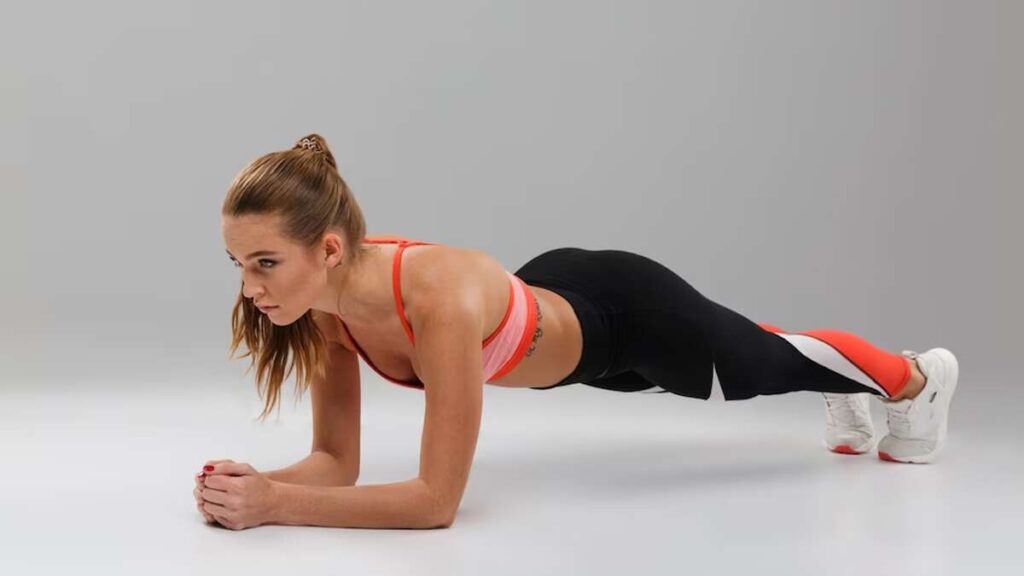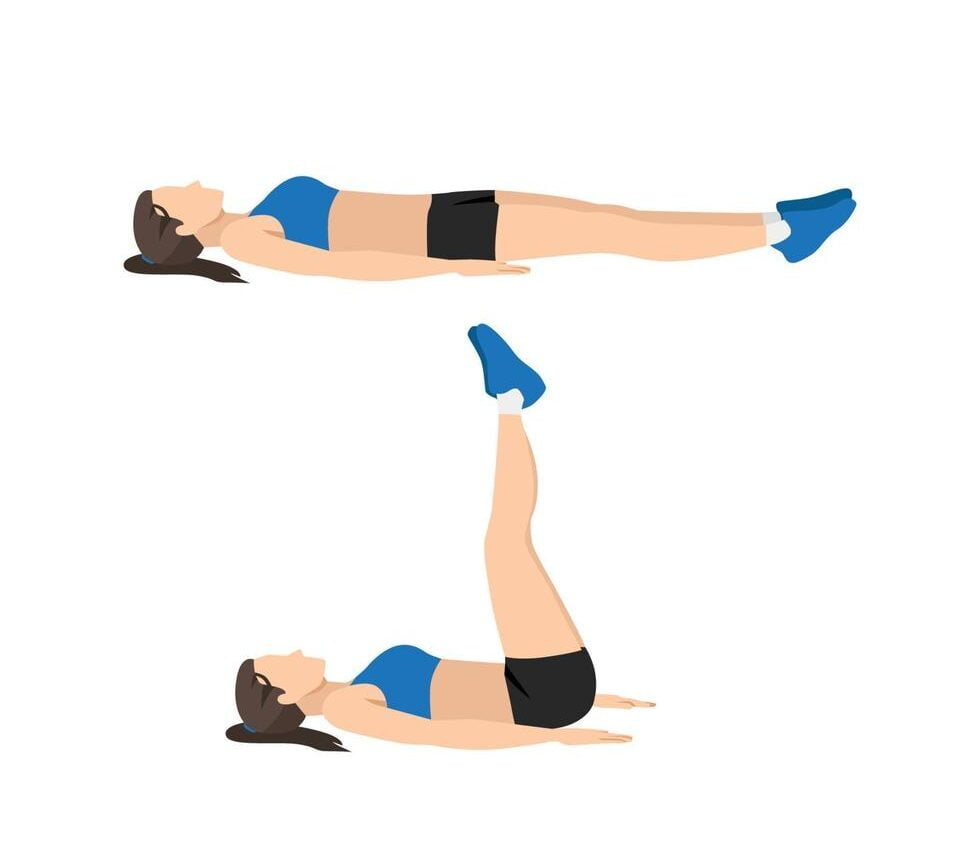Building a solid physical foundation is a crucial idea in the quest for good health that is frequently disregarded. Our bodies need a strong foundation to promote general wellness, just as a strong foundation is essential for a durable structure.
Imagine a skyscraper with a sturdy foundation that soars confidently into the sky. What is the key to its imposing size and resistance to the forces of nature? A solid foundation buried beneath the surface serves as the basis for everything. Similar to how our bodies are the “skyscrapers” of our lives, the basis of our health and vitality is fundamental.
This article discusses the importance of having a strong physical foundation by highlighting major advantages such as improved physical performance, injury avoidance, better posture, and even its unexpected effects on mental health. Additionally, you’ll discover how this foundation might serve as your long-term health insurance plan. Join us as we delve deep into the realm of health and well-being, beginning with the basis of your body.
- The Best Exercises for Building Strength and Endurance in the Body
- #1. Squats: The King of Body Base Exercises
- #2. Lunges: A Challenging Exercise for Quads, Glutes, and Hamstrings
- #3. Deadlifts: Building Full-Body Strength and Power
- #4. Planks: A Simple but Effective Core-Strengthening Exercise
- #5. Bird Dog: Enhancing Core Stability and Balance
- #6. Russian Twists: Targeting Oblique Muscles with Precision
- #7. Crunches: Classic Core Strengthening Exercise
- #8. Leg Raises: Targeting Lower Abdominal Muscles with Precision
- #9. Glute Bridges: Activating Glutes and Hamstrings
- #10. Push-Ups: A Classic Chest, Triceps, and Shoulder Workout
- #11. Pull-ups: Strengthen Your Back and Biceps
- How to Create a Body Base Workout Plan
- Tips for Building a Strong Body Base
- Wrapping Up
- Frequently Asked Questions
The Best Exercises for Building Strength and Endurance in the Body
When it comes to developing a robust and resilient physique, few things are as crucial as a firm foundation. The foundation in this case is the strength and stability on which all of your other fitness pursuits are based, not only the structural integrity of your body. To establish the groundwork for this, we dig into the world of body-based exercises—basic exercises that are the core of every successful exercise program.
#1. Squats: The King of Body Base Exercises
1. How to do a Squat

The squat, frequently referred to as the “King of Body Base Exercises,” is a complex action that activates many muscular groups at the same time. Begin with your feet shoulder-width apart, chest up, and core engaged to do a flawless squat. Descend slowly, bending at the hips and knees, maintaining your back straight, and making sure your knees don’t extend past your toes. Push through your heels to return to a standing position once your thighs are parallel to the ground. Repeat this action for a certain number of times.
2. Benefits of Squats
Squats are more than simply a leg workout; they improve your total strength and stability. They work your quadriceps, hamstrings, glutes, and lower back, as well as your core for balance. This activity increases muscle mass, burns calories, and improves mobility, making it an essential part of any fitness regimen.
#2. Lunges: A Challenging Exercise for Quads, Glutes, and Hamstrings
1. How to do a Lunge

Lunges are an effective workout that works the quadriceps, glutes, and hamstrings. Begin by putting your feet hip-width apart. Step forward with one foot, bend both knees to 90 degrees, and drop your body until your back knee almost touches the ground. To return to the beginning position, push through your front heel. To finish a set, alternate between legs.
2. Benefits of Lunges
Lunges aid in the development of lower-body strength, balance, and flexibility. They also improve muscular symmetry, which makes them perfect for avoiding muscle imbalances and accidents.
#3. Deadlifts: Building Full-Body Strength and Power
1. How to do a Deadlift

Deadlifts are the ultimate full-body exercise. Stand with your feet hip-width apart, grip a barbell or dumbbell at your hips, and lift the weight by extending your hips and knees. Maintain a neutral spine and core engagement throughout the action. To complete one repeat, carefully lower the weight back to the ground.
2. Benefits of Deadlifts
Deadlifts are unrivaled in terms of total-body strength and power development. They strengthen your lower and upper back, glutes, hamstrings, quadriceps, and grip strength. Incorporating deadlifts into your program can also help to improve your posture and lower your risk of back problems.
#4. Planks: A Simple but Effective Core-Strengthening Exercise
1. How to do a Plank

The plank is a deceptively basic yet extremely powerful exercise for core strength. Begin by constructing a straight line from your head to your heels in a push-up posture, with your elbows just beneath your shoulders. Hold this posture for as long as you can while keeping perfect form, activating your core and glutes.
2. Benefits of the Plank
Planks are the key to developing a strong, stable core, which is necessary for general strength and balance. This exercise also improves posture and lowers the chance of back problems.
#5. Bird Dog: Enhancing Core Stability and Balance
1. How to do a Bird Dog

The bird dog exercise may have a silly name, but it’s a real competitor for increasing core stability and balance. Start on all fours, hands behind your shoulders and knees beneath your hips. Extend both your right arm and left leg at the same time, forming a straight line from your fingers to your toes. Hold for a few seconds before returning to the beginning position and repeating on the other side.
2. Benefits of the Bird Dog
Bird dogs are fantastic for increasing core stability, and balance, and strengthening the muscles along your spine. This exercise can be very effective for people suffering from lower back discomfort.
#6. Russian Twists: Targeting Oblique Muscles with Precision
1. How to do a Russian Twist

Russian twists are an excellent workout for strengthening your oblique muscles. Sit on the ground, knees bent and feet flat, leaning back slightly to engage your core. With both hands, hold a weight or a medicine ball and rotate your body to one side, bringing the weight close to the ground alongside your hip. To complete one repeat, return to the middle and twist to the opposite side.
2. Benefits of Russian Twists
Russian twists assist in shaping your oblique muscles, which are important for torso stability and rotational motions. Oblique strengthening can improve your sports performance and posture.
#7. Crunches: Classic Core Strengthening Exercise
1. How to do a Crunch

Crunches are a traditional core workout that targets your rectus abdominis muscle, which is responsible for your coveted “six-pack.” Lie on your back, legs bent, feet flat on the ground. Exhale as you clench your abs and place your hands behind your head or across your chest. Return your upper body to the starting position to complete one repeat.
2. Benefits of Crunches
Crunches are a tried-and-true method for strengthening your abdominal muscles, which are essential for core stability and everyday activities.
#8. Leg Raises: Targeting Lower Abdominal Muscles with Precision
1. How to do a Leg Raise

Leg lifts are a great workout for strengthening your lower abdominal muscles. Lie on your back and place your hands under your hips for support. Lift your legs straight off the ground until they are perpendicular to the floor. Rep the action by lowering your legs without letting them hit the ground.
2. Benefits of Leg Raises
Leg raises target your lower abs, assisting you in achieving a toned and balanced core. This exercise also improves hip flexibility and decreases lower back pain.
#9. Glute Bridges: Activating Glutes and Hamstrings
1. How to do a Glute Bridge

Glute bridges are essential for developing a strong posterior chain, which includes your glutes and hamstrings. Lie on your back, legs bent, feet flat on the ground. Put your arms at your sides, palms down. Lift your hips off the ground and push through your heels until your body creates a straight line from your shoulders to your knees. At the peak, squeeze your glutes, then lower your hips back down.
2. Benefits of Glute Bridges
Glute bridges are critical for developing your glutes, which are involved in a variety of motions ranging from sprinting to lifting heavy things. This exercise can also help with lower back discomfort and posture.
#10. Push-Ups: A Classic Chest, Triceps, and Shoulder Workout
1. How to do a Push-Up

Push-ups are an age-old workout that works your chest, triceps, and shoulders. Begin in a plank stance, hands slightly wider than shoulder-width apart. Bend your elbows, keeping them close to your sides, and lower your body until your chest nearly reaches the ground. To complete one repeat, push back up to the starting position.
2. Benefits of Push-Ups
Push-ups are a flexible and efficient upper-body workout that improves chest, triceps, and shoulder strength and endurance. They also work to stabilize your core.
#11. Pull-ups: Strengthen Your Back and Biceps
1. How to do a Pull-Up

Pull-ups are the perfect workout for strengthening your back and biceps. Locate a strong overhead bar or a pull-up bar, grab it with your palms facing away from you, and hang it with your arms fully extended. Engage your back and biceps to pull your body up towards the bar until your chin clears the bar. Complete one repetition by lowering your body with control.
2. Benefits of Pull-Ups
Pull-ups are unmatched for developing upper body strength, particularly in the back and biceps. They also enhance grip strength and can contribute to better posture.
How to Create a Body Base Workout Plan
There are various important aspects to consider while creating an effective body basis training regimen. You may provide a firm foundation for your fitness journey by selecting the ideal exercises, deciding the optimal sets and repetitions, and focusing on the perfect technique. We will go into the important components of establishing a body basis training plan that will start you on the path to strength and endurance in this complete guide.
Choose the Right Exercise for Your Goals
If you’re new to fitness or want to build a strong foundation, it’s critical to start with basic exercises. These exercises not only engage many muscle groups, but they also serve as a solid foundation for more advanced motions in the future. Begin with the following essential exercises:
- Squats
Squats are the foundation of every bodyweight training routine. This complex action works your quadriceps, hamstrings, glutes, and core, building the groundwork for general lower body strength and stability.
- Lunges
Lunges are a multi-purpose workout that works your quads, hamstrings, and glutes while also improving your balance and coordination. Lunges can help you increase leg strength and symmetry by incorporating them into your program.
- Planks
Planks are a basic yet effective workout for strengthening the muscles in your core. A strong core is vital for maintaining appropriate form and lowering the chance of injury during other workouts.
- Push-Ups
Push-ups are a great technique to strengthen your chest, triceps, and shoulders. They also stimulate your core for stability, making them an excellent complement to your overall body training routine.
Consider incorporating more difficult exercises, such as deadlifts and pull-ups, into your regimen as your strength and confidence improve. These exercises work on a larger variety of muscular groups, improving your total body basis.
Begin by performing a few sets
To avoid overexertion and potential injury, it’s critical to begin your body-based training plan with a modest effort. At the start, aim for 2-3 sets of 10-12 repetitions of each exercise.
This initial phase helps your body to adjust to the motions and establish a strong foundation. As you grow and your body adjusts to the stress, gradually increase the amount of sets and repetitions to keep yourself challenged.
Focus on Proper Form
Maintaining appropriate form is one of the most important parts of any training routine. Correct form not only increases the efficiency of each exercise, but it also reduces the chance of injury. If you’re unsure about the right form for a specific exercise, consult with a skilled personal trainer. They can give vital insights and changes to ensure that each action is performed appropriately.
Tips for Building a Strong Body Base
In addition to your exercise routine, several key factors contribute to building a robust body base:
- Warm-Up Before Each Workout
Before beginning your workout, prioritize a full warm-up. Warming up boosts blood flow to your muscles, elevates your body temperature, and gets your joints ready for exercise. It’s an important step in lowering the risk of injury and improving overall performance.
- Cool Down After Each Workout
After you’ve finished your workout, take some time to relax. Gentle stretching and low-intensity workouts aid in the recovery of your body, the reduction of muscular pain, and the promotion of flexibility.
- Eat a Healthy Diet
Nutrition is crucial in developing a healthy physical foundation. A well-balanced diet high in protein, carbs, healthy fats, and key vitamins and minerals gives your body the nourishment it requires for muscle repair and growth.
- Get Enough Sleep
Sleep is sometimes undervalued, although it is critical for muscle healing and development. Aim for 7-9 hours of excellent sleep every night to help your body rebuild itself.
Wrapping Up
The importance of laying a firm foundation in the pursuit of physical strength and resilience cannot be emphasized. Our exploration of body basis exercises has highlighted the route to developing a strong and durable physique.
We set the basis for a stronger, healthier future by carefully picking the correct exercises, perfecting good technique, and embracing consistency in our workouts. Squats and lunges, as well as planks and push-ups, are basic motions that set the groundwork for success.
However, our investigation does not end here. It’s only the beginning of a life-changing journey. As we negotiate the complexity of fitness, keep in mind that developing a strong physical foundation is more than a set of exercises—it’s a way of life. It’s a commitment to constant progress, to nourish our bodies with appropriate nourishment, and an acknowledgment of the enormous importance of sound sleep.
So, as you continue on your path to lay a solid foundation, keep these things in mind. Consistency, appropriate form, and a comprehensive approach to wellbeing can help you reach your fitness objectives. With each step, you’re creating a healthier, more resilient self, not simply a better physique.
Your body is the masterpiece in the big mosaic of life, and the foundation you build today will support your goals for years to come. Investigate the greatest body basis, since they are the foundation for greatness.
Frequently Asked Questions
How can I improve my diet for a stronger foundation?
Begin by minimizing your consumption of processed meals, sugary drinks, and excessive levels of saturated fats. Instead, prioritize nutrient-dense foods such as fruits, vegetables, healthy grains, and lean meats. Make a well-balanced diet with important vitamins and minerals a priority. Consider seeing a licensed dietitian or nutritionist for individualized advice.
Is it necessary to lift heavy weights for strength training?
No, significant weight lifting is not required for successful strength training. Bodyweight exercises, resistance bands, and lesser weights are all examples of strength training strategies. Consistency and progressive overload, which is progressively increasing the resistance or intensity of your activities over time, are key considerations.
How many hours of sleep do I need for optimal recovery?
While everyone’s sleep demands are different, most people benefit from 7 to 9 hours of excellent sleep every night. However, it is critical to listen to your body and be aware of signals of exhaustion or restlessness. To maintain maximum recovery and general well-being, prioritize creating a suitable sleep environment and following good sleep practices.
Can stress affect my physical health?
Chronic stress can have serious consequences for your physical health. Prolonged stress causes a cascade of hormonal reactions that, over time, can result in a variety of health concerns such as high blood pressure, cardiovascular difficulties, weakened immunological function, and even digestive disorders. Stress management is critical for physical wellbeing. Consider deep breathing, mindfulness, yoga, or meditation as relaxing strategies.
Are supplements safe for everyone?
Supplement safety and efficacy vary greatly, and not all supplements are appropriate for everyone. It’s important to proceed with caution when it comes to supplementing. Consult a healthcare expert, such as a physician or qualified nutritionist, before adding any supplements to your regimen to examine your unique requirements and any interactions with existing prescriptions. Remember that a well-balanced diet should offer the majority of the nutrients your body requires, and supplements should only be used to supplement your diet when necessary.
What’s the best way to protect my skin?
Establish a skincare program that includes frequent washing, moisturizing, and sun protection to maintain healthy and glowing skin. Use a mild cleanser appropriate for your skin type, followed by a moisturizer to seal in moisture, and wear sunscreen with at least SPF 30 every day, even on overcast days. Consider seeking specialized skincare advice from a dermatologist, who may offer particular products and treatments targeted to your specific skin issues and objectives.











